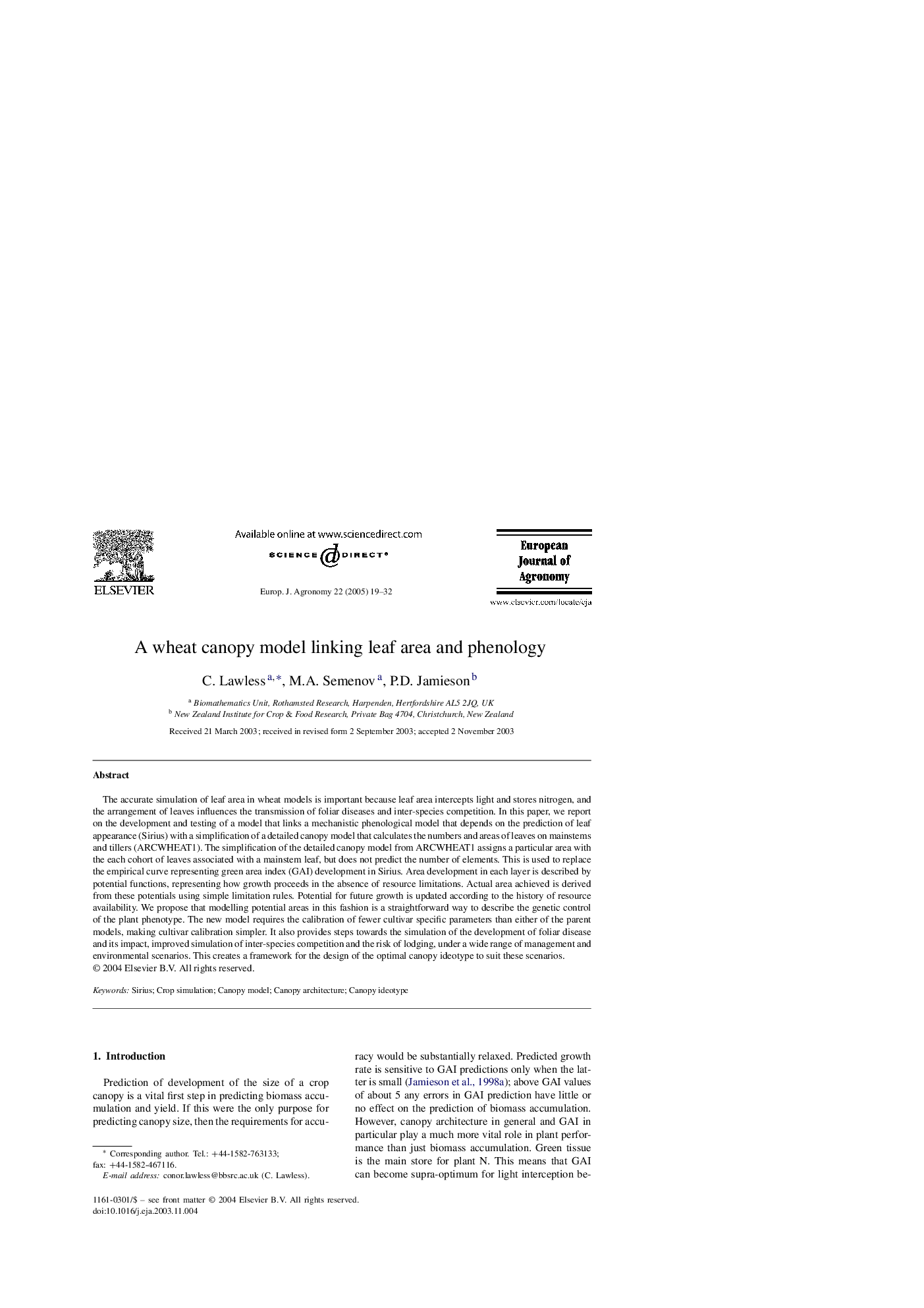| Article ID | Journal | Published Year | Pages | File Type |
|---|---|---|---|---|
| 10116665 | European Journal of Agronomy | 2005 | 14 Pages |
Abstract
The accurate simulation of leaf area in wheat models is important because leaf area intercepts light and stores nitrogen, and the arrangement of leaves influences the transmission of foliar diseases and inter-species competition. In this paper, we report on the development and testing of a model that links a mechanistic phenological model that depends on the prediction of leaf appearance (Sirius) with a simplification of a detailed canopy model that calculates the numbers and areas of leaves on mainstems and tillers (ARCWHEAT1). The simplification of the detailed canopy model from ARCWHEAT1 assigns a particular area with the each cohort of leaves associated with a mainstem leaf, but does not predict the number of elements. This is used to replace the empirical curve representing green area index (GAI) development in Sirius. Area development in each layer is described by potential functions, representing how growth proceeds in the absence of resource limitations. Actual area achieved is derived from these potentials using simple limitation rules. Potential for future growth is updated according to the history of resource availability. We propose that modelling potential areas in this fashion is a straightforward way to describe the genetic control of the plant phenotype. The new model requires the calibration of fewer cultivar specific parameters than either of the parent models, making cultivar calibration simpler. It also provides steps towards the simulation of the development of foliar disease and its impact, improved simulation of inter-species competition and the risk of lodging, under a wide range of management and environmental scenarios. This creates a framework for the design of the optimal canopy ideotype to suit these scenarios.
Related Topics
Life Sciences
Agricultural and Biological Sciences
Agronomy and Crop Science
Authors
C. Lawless, M.A. Semenov, P.D. Jamieson,
